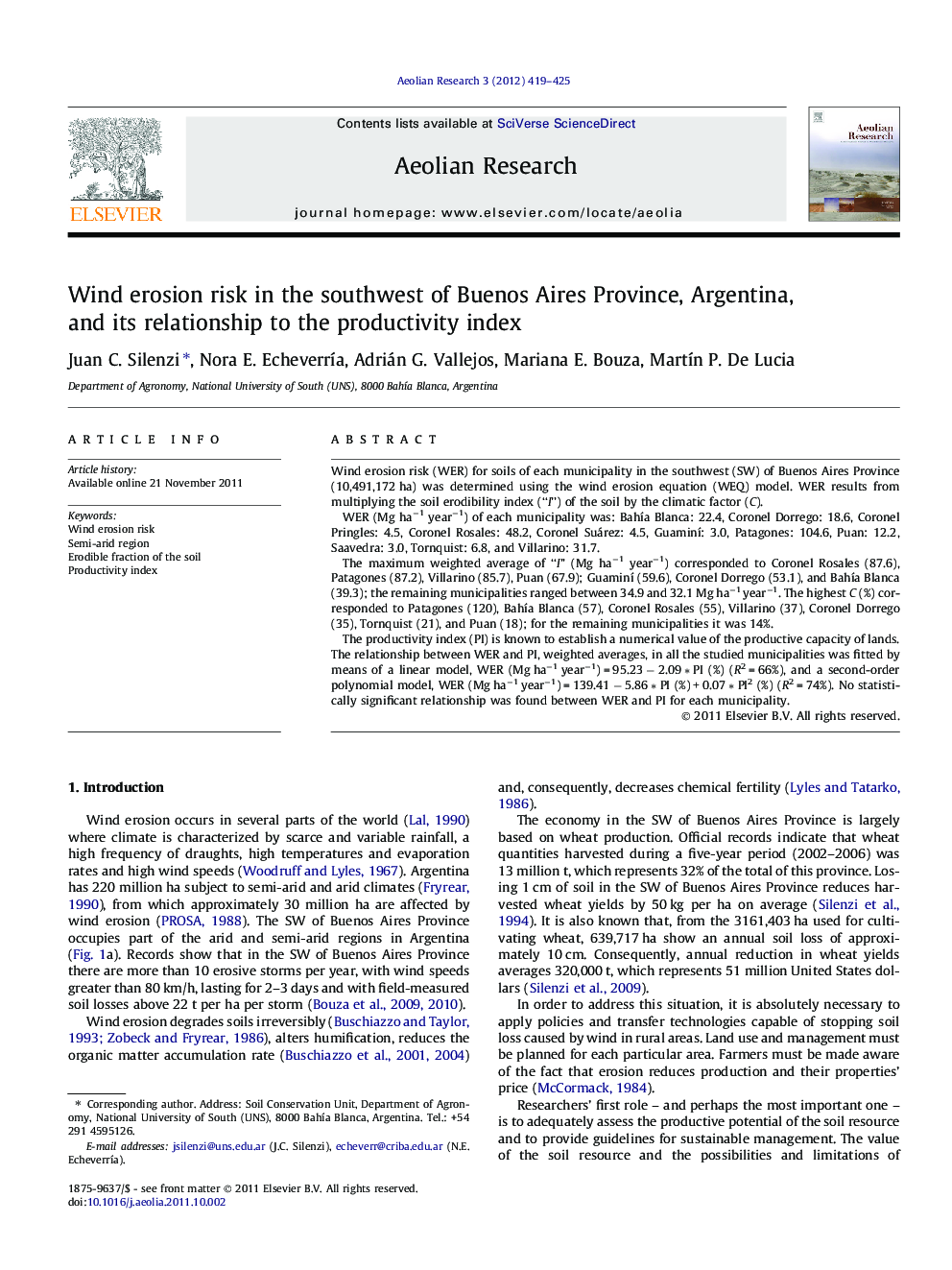| Article ID | Journal | Published Year | Pages | File Type |
|---|---|---|---|---|
| 4673935 | Aeolian Research | 2012 | 7 Pages |
Wind erosion risk (WER) for soils of each municipality in the southwest (SW) of Buenos Aires Province (10,491,172 ha) was determined using the wind erosion equation (WEQ) model. WER results from multiplying the soil erodibility index (“I”) of the soil by the climatic factor (C).WER (Mg ha−1 year−1) of each municipality was: Bahía Blanca: 22.4, Coronel Dorrego: 18.6, Coronel Pringles: 4.5, Coronel Rosales: 48.2, Coronel Suárez: 4.5, Guaminí: 3.0, Patagones: 104.6, Puan: 12.2, Saavedra: 3.0, Tornquist: 6.8, and Villarino: 31.7.The maximum weighted average of “I” (Mg ha−1 year−1) corresponded to Coronel Rosales (87.6), Patagones (87.2), Villarino (85.7), Puan (67.9); Guaminí (59.6), Coronel Dorrego (53.1), and Bahía Blanca (39.3); the remaining municipalities ranged between 34.9 and 32.1 Mg ha−1 year−1. The highest C (%) corresponded to Patagones (120), Bahía Blanca (57), Coronel Rosales (55), Villarino (37), Coronel Dorrego (35), Tornquist (21), and Puan (18); for the remaining municipalities it was 14%.The productivity index (PI) is known to establish a numerical value of the productive capacity of lands. The relationship between WER and PI, weighted averages, in all the studied municipalities was fitted by means of a linear model, WER (Mg ha−1 year−1) = 95.23 − 2.09 * PI (%) (R2 = 66%), and a second-order polynomial model, WER (Mg ha−1 year−1) = 139.41 − 5.86 * PI (%) + 0.07 * PI2 (%) (R2 = 74%). No statistically significant relationship was found between WER and PI for each municipality.
